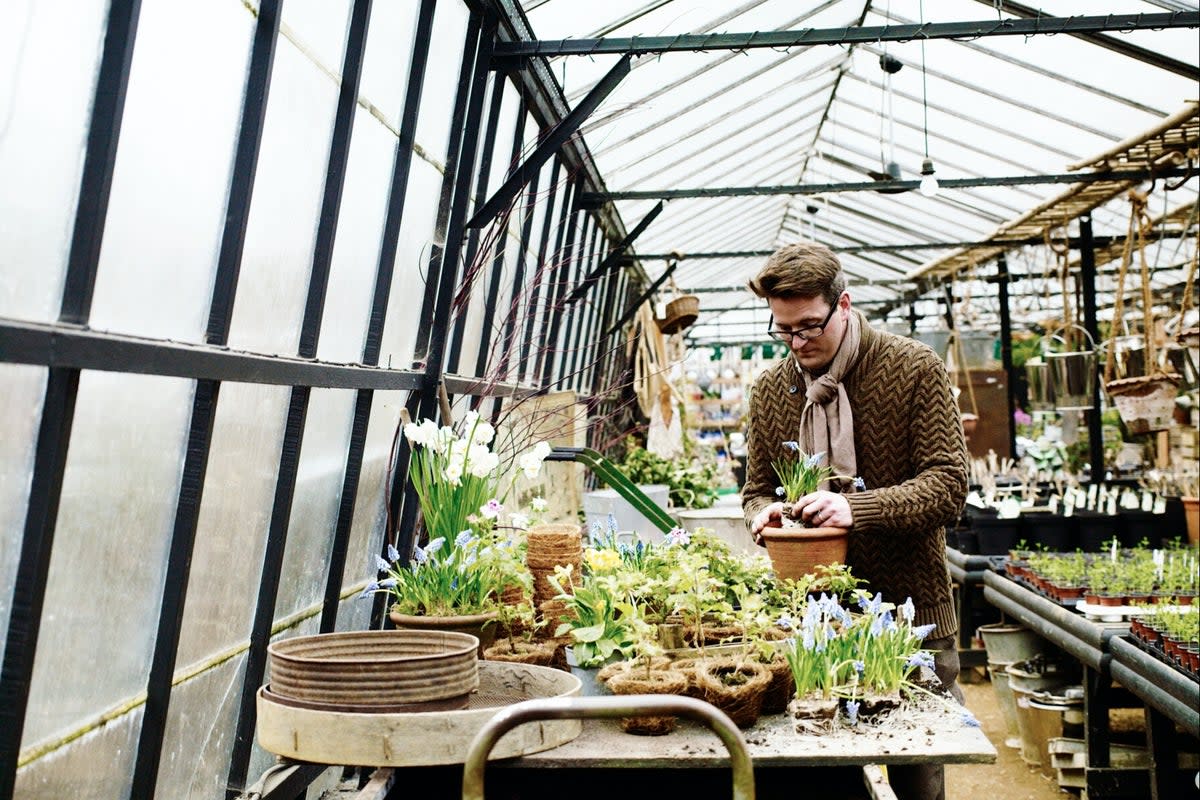Slow gardening: when to plant, what to buy and how to be less wasteful as part of the patient gardening revolution

By now you’ll be well aware of the perils and pitfalls of fast food, and fast fashion. But what about fast gardening? If you’ve ever been tempted by a plant in perfect bloom in a supermarket or garden centre, only to find that weeks or sometimes days later it’s as forlorn as a high street dress after one wear, then you’ve fallen victim to the highly commercialised gardening industry at its worst.
Plants are grown in more-than-perfect conditions, often in heated greenhouses and are put on display in their prime for a quick floral fix. Sadly, when a plant is flowering is almost always the worst time to plant it — plants in bloom are concerned with attracting pollinators to produce offspring, rather than putting down roots and establishing themselves properly.
Even worse is the waste that comes with fast gardening. The plant itself, the compost it was grown in and the plastic pot are all short-lived purchases.
Then there’s the resources involved in transporting the plant, often by lorry from Europe to your local shop as well as the time, effort and resource that went into the care of the plant in the months or even years before it was sold to you, including substantial watering, feeding and heating. Last year as a nation we spent £16 billion on our gardens. How many of those plants are still alive?
There is another way.
Gardening is on the brink of a quiet revolution: slow gardening.
The concept has been around for a while, first mentioned by the ironically named American gardener and journalist Felder Rushing, whose blog and books are a good place to start for advice on the subject.
There are also several nurseries and garden centres with a slow gardening ethos, even in London, among them Walworth Garden and Petersham Nurseries.

“It’s about a change in mindset, growing for longevity, nurturing things from seed and watching them develop through the seasons, reusing and recycling and sharing with other people,” says Thomas Broom Hughes, director of horticulture at Petersham Nurseries.
Think two seasons ahead
Don’t rush to the garden centre on the first sunny day of spring. Plan ahead and make time to sow seeds and take cuttings for stronger plants that are suited to growing in the conditions you have at home. In autumn, think about what you would like the garden to look like in spring, in winter start thinking about summer.
Get organised
“Keep a gardening journal or set up a calendar on your phone to remind you of when to do things like planting any bulbs you’ve saved from previous years or sowing seeds for crops later in the year. There are lots of resources online for what to do throughout the gardening year,” says Broom Hughes.
Start from scratch
For the price of one flowering plant, you can often buy a few seed packets containing hundreds of seeds. Learn to love the process and embrace the excitement when seeds begin germinate and cuttings begin to root. You did that. You can sow from seed on a balcony or even a windowsill so lack of space is no excuse.
Green is good
If you are buying plants (and there is no problem with this!), buy them small and when they aren’t flowering or about to flower because they will establish better. The best time to plant is in the autumn, when the ground is still warm and it’s raining more frequently. Your garden doesn’t need to be in flower all the time, appreciate the myriad of greens and other colours in the foliage.
Plant for your environment
If you have a windy roof terrace it’s only suitable for grasses and drought tolerant plants. If you plant almost anything else it will die quite quickly. Do your research before choosing what to buy and plant to avoid waste,” says Broom Hughes.
Upcycle
“Try to avoid buying new containers where possible. Perhaps you’ve got a wooden wine crate lying around or even an old dustbin you could plant herbs or vegetables in,” Broom Hughes suggests.
Embrace perennials
You don’t have to buy an entire garden’s worth of plants anew every year, even if you’re renting and move often. “You could plant a perennial that will flower over a long period of time in a container and take it with you from property to property,” says Broom Hughes. He recommends herbaceous perennials that benefit wildlife too, including Buddleia, Rudbeckia and Phlox for a garden that’s flowering now but will come back again year after year.

 Yahoo Movies
Yahoo Movies 
